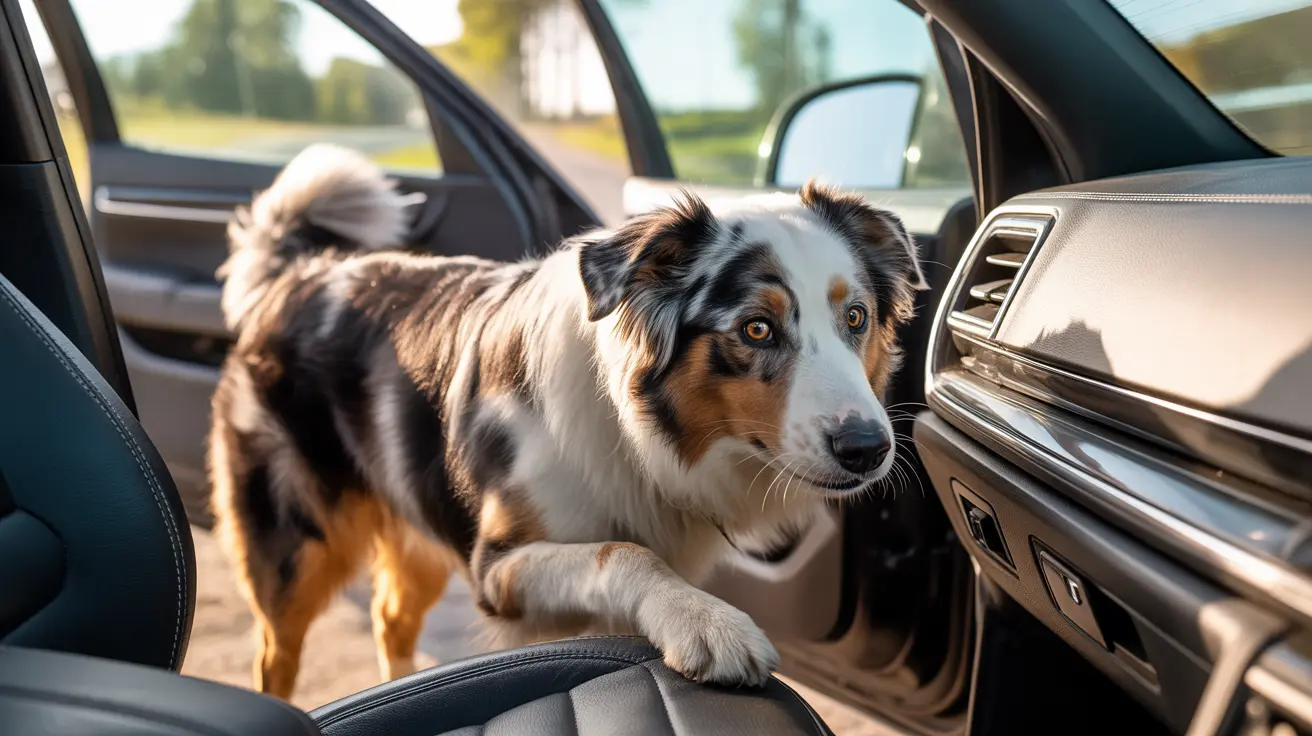As summer approaches, pet parents face the crucial task of maintaining an optimal house temperature for their dogs. Unlike humans, dogs have limited ways to cool themselves down, making proper indoor temperature management essential for their comfort and safety. This comprehensive guide will help you understand the ideal house temperature for dogs in summer and how to keep your furry friend comfortable during hot weather.
Whether you're a new pet parent or a seasoned dog owner, understanding how to manage your home's temperature can make a significant difference in your dog's well-being during the warmer months. Let's explore the essential factors that influence your dog's comfort and the steps you can take to ensure they stay safe when temperatures rise.
Understanding the Ideal Temperature Range
The optimal house temperature for dogs in summer typically falls between 75°F and 78°F (24°C–26°C). This range provides a comfortable environment for most dogs while helping them maintain their natural body temperature. However, it's important to note that different dogs may have varying temperature preferences based on their individual characteristics.
When setting your thermostat, remember that temperatures above 82°F (28°C) can pose risks for most dogs, especially those with thick coats or underlying health conditions. Even when you're away, it's crucial to maintain these safe temperature ranges to prevent heat-related issues.
Breed-Specific Temperature Considerations
Different dog breeds have varying tolerance levels for summer heat. Nordic breeds like Huskies and Samoyeds typically prefer cooler temperatures due to their thick double coats. Conversely, short-haired breeds such as Chihuahuas might be comfortable with slightly warmer temperatures.
Large breeds and brachycephalic dogs (those with flat faces) are particularly susceptible to heat and may require cooler environments. These breeds often struggle with temperature regulation and can quickly become overwhelmed in warm conditions.
Creating a Cool Environment for Your Dog
Beyond setting the right temperature, there are several ways to ensure your dog stays comfortable during summer:
- Provide multiple water stations throughout your home
- Set up cooling mats or raised beds in different rooms
- Create shaded areas away from direct sunlight
- Ensure proper ventilation with fans or air circulation
- Make frozen treats for additional cooling options
Managing Temperature When You're Away
When leaving your dog home alone during summer, proper temperature management becomes even more critical. Set your thermostat no higher than 80°F (27°C), even if you're trying to save on energy costs. Consider installing a smart thermostat that allows you to monitor and adjust the temperature remotely.
Ensure your dog has access to cool spots in the house, such as tiled floors or basement areas, where they can naturally regulate their body temperature. Having multiple water sources available is also essential for preventing dehydration.
Recognizing Signs of Overheating
Being able to identify when your dog is too warm can help prevent serious health issues. Watch for these warning signs:
- Excessive panting or drooling
- Lethargy or unusual behavior
- Increased heart rate
- Vomiting or diarrhea
- Disorientation or collapse
Frequently Asked Questions
What is the ideal indoor temperature range to keep my dog comfortable during summer?
The ideal indoor temperature range for dogs during summer is between 75°F and 78°F (24°C–26°C). This range helps maintain their comfort while preventing overheating.
How does my dog's breed, coat type, and age affect the best house temperature in hot weather?
Breed, coat type, and age significantly impact temperature preferences. Long-haired breeds need cooler temperatures, while short-haired dogs may tolerate slightly warmer conditions. Senior dogs and puppies often need more moderate temperatures due to their reduced ability to regulate body heat.
What are the early signs that my dog is overheating indoors, and how can I prevent heatstroke?
Early signs include excessive panting, drooling, lethargy, and increased heart rate. Prevent heatstroke by maintaining appropriate indoor temperatures, providing plenty of water, and ensuring good ventilation.
How should I adjust the thermostat when leaving my dog alone at home in summer?
Never set the thermostat higher than 80°F–82°F (27°C–28°C) when leaving your dog alone. It's better to maintain a consistently cool temperature rather than letting it fluctuate throughout the day.
What practical steps can I take to keep my dog cool and safe inside the house on hot days?
Provide multiple water sources, create cool spots with cooling mats or tiles, ensure good air circulation, offer frozen treats, and maintain appropriate indoor temperatures. Also, keep blinds closed during peak heat hours to reduce solar gain.
Remember, maintaining the right house temperature for your dog in summer is crucial for their health and comfort. By following these guidelines and staying attentive to your pet's needs, you can help ensure they stay safe and comfortable throughout the warmer months.





